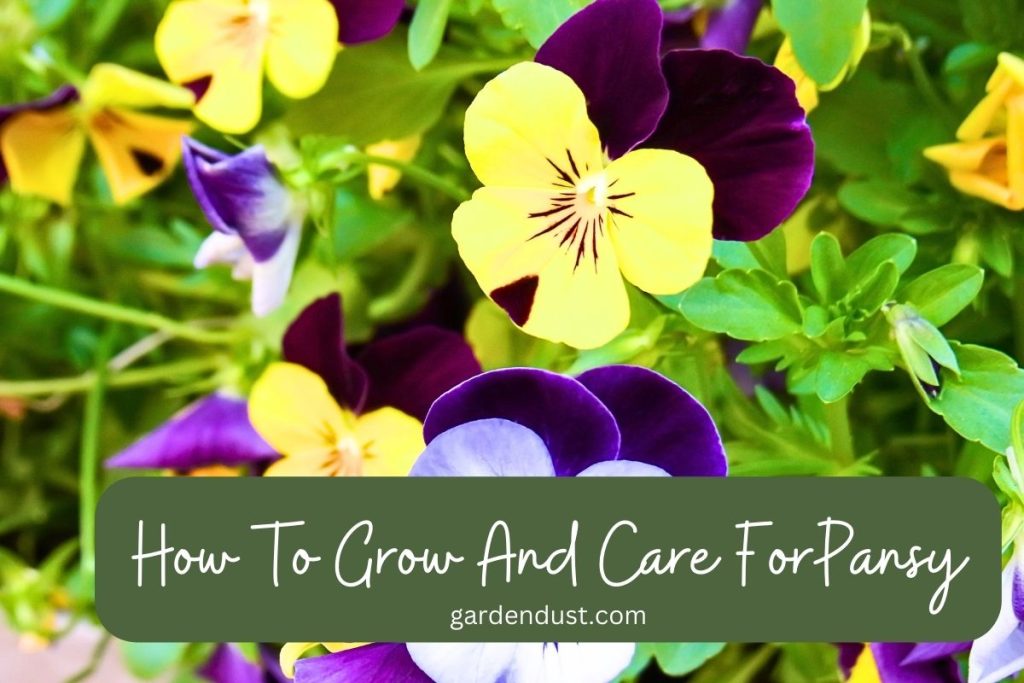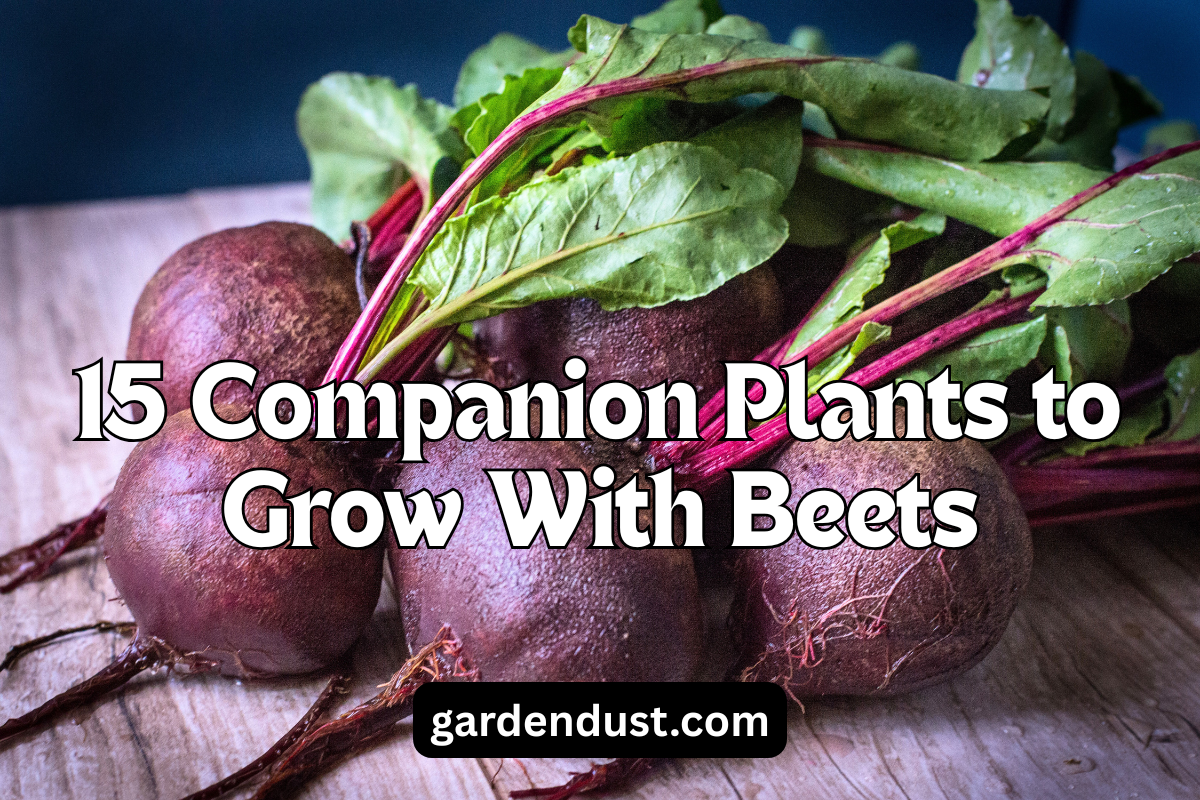Pansies are beloved flowering plants known for their cheerful, vibrant blooms and easy-to-care-for nature. Whether you’re an experienced gardener or a novice with a green thumb, pansies can be a delightful addition to your garden. In this comprehensive guide, we will delve into the world of pansies, discussing How To Grow And Care For Pansy. Let’s start…
Pansy (Viola tricolor var. hortensis)
Native: Pansies are not native to a specific region but are cultivated worldwide.
Family: Violaceae
Botanical Name: Viola tricolor var. hortensis
Common Name: Pansy
Color -Purple, yellow, white, orange, blue, and various combinations and shades.
Plant Type: Pansies are herbaceous, cool-season perennials often grown as annuals or biennials in temperate climates.
Varieties to consider:
- Large-Flowered Pansies: These varieties boast larger, eye-catching blooms and are perfect for adding a bold splash of color to your garden.
- Clear Pansies: These have a single, solid color and are known for their elegant simplicity.
- Frizzle Sizzle Pansies: With their ruffled and fringed petals, these pansies add a touch of whimsy to your garden.
- Multicolored Pansies: If you love a mix of colors, opt for varieties that have two or more shades on a single bloom.
- Trailing Pansies: These are perfect for hanging baskets and containers, as they cascade gracefully over the sides.
Varieties of Pansies
- Majestic Giants Series: Known for their large, vibrant blooms, this series includes various color options like ‘Majestic Giants White’, ‘Majestic Giants Yellow’, and ‘Majestic Giants Purple’.
- Delta Series: These pansies have a compact growth habit and come in a variety of colors, including ‘Delta Pure Yellow,’ ‘Delta Premium Beaconsfield,’ and ‘Delta Lavender Blue’.
- Matrix Series: Matrix pansies are known for their uniform growth and abundant flowers. Varieties include ‘Matrix Rose Blotch,’ ‘Matrix Blue Blotch,’ and ‘Matrix Yellow’.
- Ultima Series: These pansies feature frilly and colorful blooms. Varieties like ‘Ultima Morpho’ and ‘Ultima Radiance’ offer a striking display of color.
- Cool Wave Series: Cool Wave pansies are trailing varieties, perfect for hanging baskets and containers. ‘Cool Wave Frost’ and ‘Cool Wave Violet Wing’ are popular choices.
- Nature Series: The Nature series includes varieties with distinct blotch patterns on their petals. ‘Nature Antique Shades’ and ‘Nature Ocean Breeze’ are notable examples.
- Inspire Plus Series: These pansies have a compact growth habit and offer a range of colors, including ‘Inspire Plus Yellow’ and ‘Inspire Plus Orange’.
- Frizzle Sizzle Series: Known for their ruffled and fringed petals, the Frizzle Sizzle pansies add a touch of whimsy to your garden. Varieties include ‘Frizzle Sizzle Burgundy’ and ‘Frizzle Sizzle Yellow’.
- Viola ‘Sorbet’ Series: While not technically pansies, these closely related viola varieties offer charming, smaller blooms. ‘Sorbet XP Yellow’ and ‘Sorbet XP Blueberry Cream’ are popular choices.
- Clear Crystals Series: Clear Crystals pansies have single, solid colors and a neat appearance. Varieties like ‘Clear Crystals Mix’ and ‘Clear Crystals Apricot’ are eye-catching.
- Panola Series: Panola pansies are known for their cold tolerance and come in various colors and patterns, such as ‘Panola Pink Shades’ and ‘Panola Blue’.
- Antique Shades Mix: This mix includes pansies with a vintage, antique look, featuring soft, muted colors reminiscent of heirloom varieties.
- Spring Matrix Mix: A mix of vibrant and cheerful colors that bloom profusely in the spring, creating a colorful carpet in your garden.
- Frizzle Sizzle Mix: A mix of fringed and ruffled pansies that add a playful and whimsical element to your garden.
- Viola tricolor (Wild Pansy): This is the wild ancestor of modern pansies and is known for its small, delicate flowers with three distinct colors. It’s sometimes included in wildflower or meadow mixes.
These are just a selection of the many pansy varieties available, and there are countless more with different colors, patterns, and characteristics. When choosing pansies for your garden, consider factors such as your climate, desired color palette, and growth habits to select the varieties that best suit your landscaping needs.
Planting Pansies
Pansies thrive in cool weather, making them ideal for early spring or fall planting. Here’s a step-by-step guide to planting pansies:
- Selecting the Location: Pansies prefer partial to full sun, but they can tolerate light shade. Choose a location that receives at least 4-6 hours of sunlight each day.
- Soil Preparation: Pansies prefer well-drained, slightly acidic soil with a pH between 5.8 and 6.2. Amend your soil with organic matter, such as compost, to improve drainage and fertility.
- Planting Depth: Dig small holes about 6-8 inches apart and place your pansy plants at the same depth they were in their nursery pots. Space rows 9-12 inches apart.
- Watering: After planting, water your pansies thoroughly to help settle the soil. Maintain consistent moisture levels, ensuring the soil doesn’t dry out completely.
Pansy Care
Caring for pansies is relatively straightforward, but they do have specific needs to thrive. Here’s how to keep your pansies healthy and vibrant:
- Watering: Pansies need regular, consistent moisture. Water deeply when the soil is dry to the touch, but avoid overwatering, as they are susceptible to root rot. Water the base of the plant to keep the foliage dry.
- Fertilization: Pansies benefit from a balanced, slow-release fertilizer applied every 4-6 weeks. Be sure to follow the manufacturer’s instructions for application rates.
- Deadheading: Regular deadheading, or the removal of spent blooms, encourages continuous flowering. Pinch off faded flowers to promote new ones.
- Mulching: Applying a layer of mulch around your pansies helps retain soil moisture and suppress weeds. Organic mulch like straw or wood chips is ideal.
READ ASLO:-10 Easy Tips for Growing Beautiful Roses
Overwintering Pansies
Pansies are known for their cold tolerance and can often survive mild winters. To overwinter your pansies successfully:
- Mulch: Apply a thick layer of mulch around the base of the plants to insulate the roots and protect them from frost.
- Pruning: Trim back leggy growth in the fall to maintain a compact shape and encourage overwintering.
- Watering: Continue to water your pansies sparingly during the winter, keeping the soil slightly moist but not waterlogged.
- Protection: In extremely cold regions, consider covering your pansies with a row cover or frost cloth during severe cold spells.
Common Pansy Problems and Solutions
Even with proper care, pansies can encounter issues. Here are some common problems and how to address them:
- Yellowing Leaves: This could indicate overwatering or poor drainage. Ensure the soil is well-draining and adjust your watering schedule accordingly.
- Leggy Growth: Pansies may become leggy in late spring or summer. Trim them back to encourage bushier growth.
- Pest Infestations: Use insecticidal soap or neem oil to treat aphids, and employ slug bait for slug problems.
- Fungal Diseases: To prevent fungal diseases, avoid overhead watering, provide good air circulation, and use a fungicide if necessary.
Propagation of pansy
Pansies are popular garden flowers known for their vibrant colors and cheerful appearance. Propagating pansies allows you to create new plants from your existing ones, saving you money and expanding your garden. There are several methods you can use to propagate pansies, including seeds, cuttings, and division. In this guide, we will explore these methods in detail.
Propagation from Seeds:
Propagating pansies from seeds is the most common method and allows you to grow a wide variety of pansy plants. Here’s how to do it:
- If you have pansies in your garden and want to save their seeds, wait until the flowers have faded, and seed pods have formed. Collect the seeds when the pods turn brown and dry.
- Pansy seeds can be started indoors 8-12 weeks before the last expected frost date in your area. Fill seed trays or pots with a seed-starting mix and sow the seeds on the surface. Press them lightly into the soil, but do not cover them as pansy seeds need light to germinate.
- Keep the soil consistently moist and maintain a temperature of around 60-65°F (15-18°C) for germination, which usually takes 10-21 days.
- Once the seedlings have developed a few true leaves, transplant them into larger pots or directly into your garden when the weather is suitable.
Propagation from Cuttings:
Propagating pansies from cuttings is another effective method, especially if you have a specific pansy plant you want to clone. Here’s how to do it:
- Choose a healthy, disease-free pansy plant to take cuttings from.
- Snip off 3-4 inch (7.5-10 cm) stem cuttings just below a leaf node. Remove any flowers or buds from the cuttings.
- Plant the cuttings in a well-draining rooting medium, such as a mixture of perlite and peat moss, or use a commercial rooting hormone to stimulate root growth.
- Keep the cuttings in a humid environment with indirect light. You can use a plastic bag or a propagator to maintain high humidity levels. Make sure the rooting medium stays consistently moist.
- Once the cuttings have developed roots, which typically takes 2-4 weeks, transplant them into pots or your garden.
Propagation by Division:
Propagation by division is a method used for established pansy plants that have become too large or crowded. This method helps rejuvenate the plant and create new ones:
- Select a mature pansy plant that has several stems or clumps.
- Carefully dig up the entire plant, ensuring you get as much of the root system as possible.
- Gently separate the plant into smaller clumps or sections. Each section should have both roots and foliage.
- Plant the divided sections in a well-prepared garden bed or pots, making sure the roots are adequately covered with soil. Water thoroughly.
- Water the newly planted divisions regularly until they establish themselves.
Usages:
- Ornamental: Pansies are primarily grown for their ornamental value. They are commonly used in flower beds, borders, containers, and hanging baskets to add vibrant colors to gardens and landscapes.
- Edible: Pansy flowers are edible and are sometimes used as decorative garnishes in salads, desserts, and drinks due to their pleasant appearance and mild, slightly sweet flavor.
- Medicinal: Historically, pansies have been used in herbal medicine for their potential mild healing properties, although their medicinal use is limited today.
- Pollinator Attraction: Pansies can attract pollinators like bees and butterflies to your garden, benefiting overall biodiversity.
- Companion Planting: Pansies are sometimes used as companion plants to deter certain garden pests and enhance the growth of neighboring vegetables and herbs.
- Aesthetic and Therapeutic: Pansies are often grown for their aesthetic appeal and have a therapeutic effect on gardeners and enthusiasts, promoting relaxation and well-being through gardening.
Growing and caring for pansies can be a rewarding experience, as these charming flowers bring color and cheer to your garden throughout the cooler seasons. By choosing the right varieties, planting correctly, and providing proper care, you can enjoy a bountiful display of pansies that will brighten your outdoor space. So, whether you’re a seasoned gardener or a novice, consider adding pansies to your garden for a touch of elegance and beauty. Happy Gardening…







